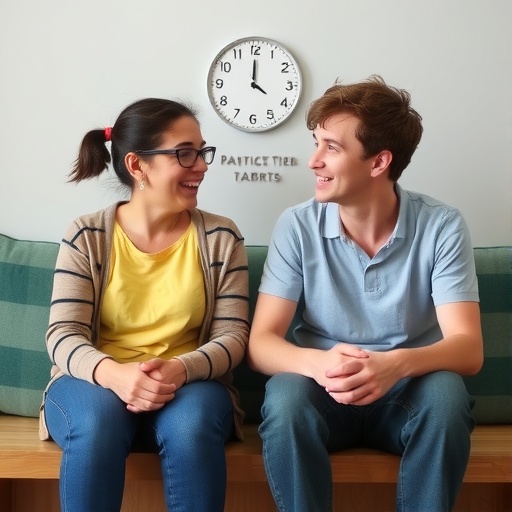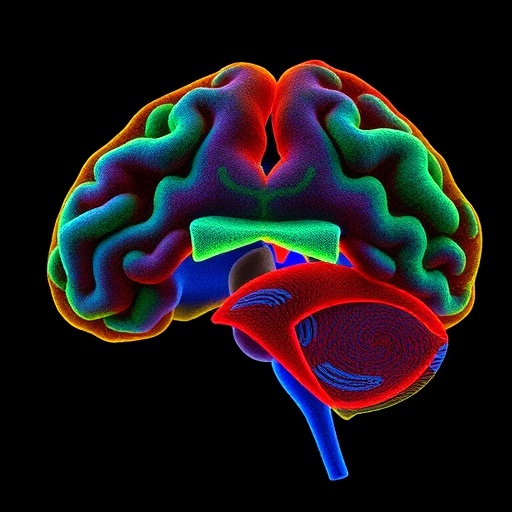
Emerging data from new research is set to capture attention at the forthcoming European Congress on Obesity (ECO 2025) in Malaga, Spain. The findings present a noteworthy investigation into the impacts of GLP-1 and dual GLP-1/GIP receptor agonist therapies on weight loss, with a significant focus on the preservation of lean muscle mass during weight reduction efforts. Conducted by Dr. Dinabel Peralta-Reich from the Donald and Barbara Zucker School of Medicine at Hofstra/Northwell, alongside Dr. Alexandra Filingeri of New York Weight Wellness Medicine, this study underscores the critical intersection of obesity treatment and muscle maintenance, which is paramount for overall health outcomes in individuals struggling with obesity.
The utilization of GLP-1 receptor agonists, such as semaglutide and liraglutide, has revolutionized the management of type 2 diabetes and provided robust strategies for weight loss. Recently, the approval of tirzepatide, which uniquely combines actions of GLP-1 and GIP, has expanded therapeutic options for both obesity and diabetes management. The clinical community is increasingly focused on understanding not just the efficacy of these drugs in facilitating weight loss, but also their capacity to mitigate losses in lean muscle mass, an important factor for metabolic health and physical functionality. This study offers vital insights into these concerns, thereby enriching the discussion around obesity treatment strategies.
The six-month prospective cohort study enrolled 200 adults aged between 18 to 65 years with a body mass index (BMI) of 25 kg/m² or higher, indicative of overweight or obesity. Participants were divided into two groups, with 120 individuals receiving tirzepatide and 80 individuals receiving semaglutide. In addition to pharmacological intervention, subjects received education on resistance training and dietary protein intake, emphasizing a multifaceted approach to weight management. Standardized education provided by a board-certified obesity physician helped ensure participants were well-equipped to utilize the medications effectively.
To accurately assess body composition changes over the six-month intervention, researchers employed bioelectrical impedance analysis using the InBody 570 system. This advanced body composition analyzer provided comprehensive data on muscle, fat, and water distribution in the participants, allowing for a detailed understanding of shifts in body composition attributable to the management strategies deployed. By measuring parameters such as skeletal muscle mass and body fat percentage, the researchers could glean insights on how these therapies influenced both fat loss and muscle retention.
As the results unfolded, data showed promising outcomes in body weight and composition changes post-intervention. At the conclusion of the six-month period, female participants exhibited an average weight reduction from 156 pounds (71 kg) to 137 pounds (62 kg), translating to a significant 12% loss. Male participants experienced a similar trend, with average weights decreasing from 223 pounds (101 kg) to 193 pounds (88 kg), marking a noteworthy 13% reduction. Such findings suggest that both medications are effective tools in the battle against obesity, delivering substantial weight loss results among participants.
Diving deeper into the body composition metrics, the research revealed that women lost an average of 10.8 kg of fat mass, while concurrently experiencing only a minimal decline in muscle mass of 1.4 pounds (0.63 kg). In contrast, male participants shed an even more significant amount of fat mass at 25 pounds (12 kg) but experienced a greater relative decline in muscle mass of 2.4 pounds (1 kg). These results suggest that both genders benefited from the weight loss therapies provided; however, it also highlighted the importance of vigilant oversight in maintaining muscle mass during such weight loss initiatives.
Monitoring adherence to the medication regime was a critical aspect of the study, revealing impressive statistics: 95% of participants reported adherence at the three-month mark and 89% maintained compliance by the six-month check-in. These figures underscore the potential effectiveness of the interventions when patients are genuinely engaged and supported throughout their journey. The qualitative data collected from participants indicated that adherence to resistance training routines and consistent protein intake were positively correlated with muscle preservation, reinforcing established notions about the importance of physical activity and dietary choices in the context of obesity management.
Overall, the six-month study elucidates the effectiveness of GLP-1 and dual GLP-1/GIP receptor agonists in promoting substantial weight loss while mitigating muscle mass decline. While some muscle loss is an inherent part of weight loss, the data suggests patients under the care of specialized obesity physicians can achieve favorable outcomes that prioritize lean mass preservation. Initial findings indicate key factors such as protein intake, medication adherence, and structured follow-up play critical roles in optimizing patient success during these weight loss therapies.
With the study still ongoing, further analysis is anticipated to illuminate finer details regarding the comparative effects of tirzepatide and semaglutide, particularly in regards to their differential impacts on muscle and fat mass retention. It is evident that this evolving area of research will contribute significantly to the clinical guidelines surrounding obesity treatment, reinforcing the necessity for tailored approaches that balance effective weight loss with vital muscle preservation.
As the research unfolds, the authors emphasize a call to action for more robust investigations into dietary patterns and exercise strategies complementing these pharmacologic interventions. The overarching goal is to better delineate the holistic management of obesity that does not merely focus on numerical weight loss but also preserves and enhances the functional health of individuals battling this complex condition. By fostering continued exploration in this critical facet of obesity treatment, healthcare professionals can enhance the quality of life for countless individuals impacted by obesity.
Subject of Research: GLP-1 and dual GLP-1/GIP receptor agonist therapy for weight loss and muscle preservation
Article Title: GLP-1 and Dual Agonist Therapy: Preserving Muscle Mass During Weight Loss
News Publication Date: 9-Apr-2025
Web References: [Specify if available]
References: [Specify if available]
Image Credits: [Specify if available]
Keywords: GLP-1, tirzepatide, semaglutide, obesity, weight loss, muscle preservation, body composition, resistance training, protein intake
Tags: clinical research on obesityDr. Dinabel Peralta-Reich researchdual GLP-1/GIP receptor agonistsECO 2025 conference findingsGLP-1 receptor agonistsincretin-based obesity drugsmetabolic health and obesityobesity and muscle maintenanceobesity treatment strategiespreservation of lean muscle masstirzepatide for diabetes managementweight loss therapy





